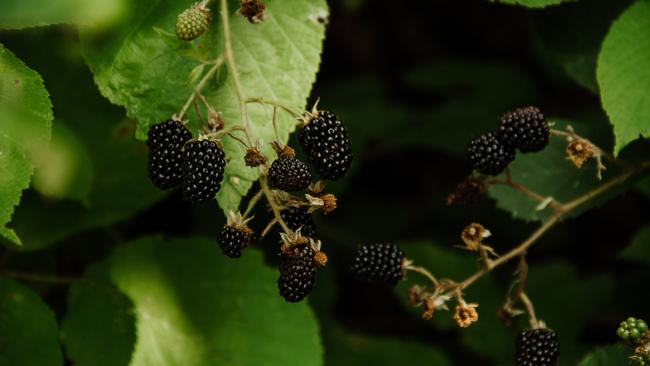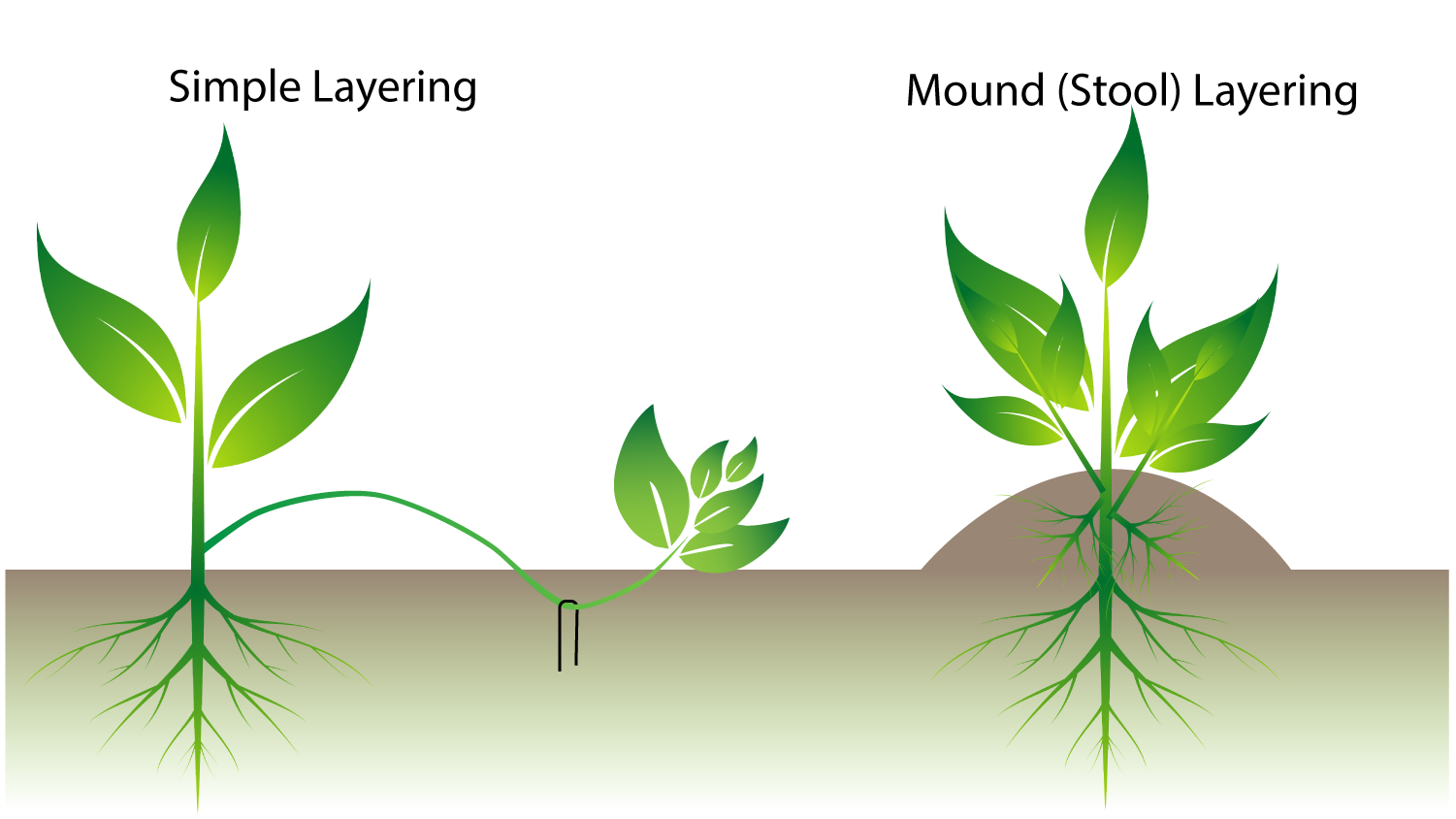Layering: Encouraging Stems to Grow Roots
With layering, stems are induced to produce "adventitious" roots while they remain attached to the parent plant. Adventitious roots are those produced in an unusual time or position.

Tip layering
Some plants, such as blackberries and raspberries (Rubus), naturally form layers when the tips of branches touch the ground. This is called tip layering.
Simple layering
Some plants just need a little encouragement to propagate. Examples of plants propagated by simple layering include climbing roses (Rosa), rhododendron and azalea (Rhododendron), honeysuckle (Lonicera), and boxwood (Buxus). Simple layering can be done in early spring using a dormant branch, or in late summer using a mature branch.
How to propagate by simple layering:
1. Bend a stem that is one or two years old down to the ground.
2. Pin it in place and lightly cover it in soil. Irrigation staples work well.
3. Cut the "daughter" plant from the mother after a few months to a year.
4. Transplant into a pot or in the ground.

Mound (stool) layering
This works for plants with heavy stems and closely-spaced branches. This is a good method for old, woody shrubs like rosemary (Rosmarinus), lavender (Lavandula), and thyme (Thymus), or for shrubs with close branches like flowering quince (Chaenomeles). It is also used for rootstocks of apple and plum trees.
How to propagate by mound layering:
1. Cut plant back almost to the ground during the dormant season.
2. Mound soil (or a mixture of soil and sawdust) around the base of the new shoots as they grow. Roots develop at the bases of the shoots.
3. Dig them out in spring.
4. Cut off the rooted layers from the parent plant.
5. Transplant.
